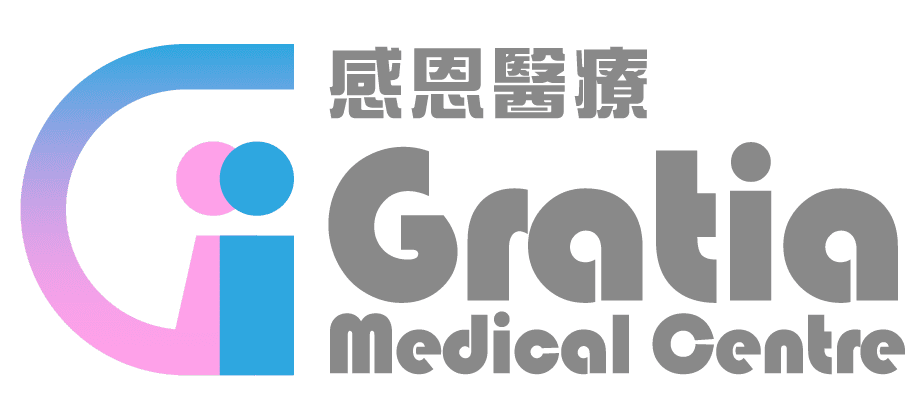Breasts often change in size or sensation due to hormonal status and age of the women. Sometimes women may feel pain or lumps in their breasts. Although most of these conditions are not signs of sinister diseases such as cancers, it is imperative that women with these symptoms be thoroughly assessed by undergoing a proper breast examination. The examination consists of 3 steps, famously known as the Triple Assessment: the clinical examination, the radiological examination and the pathological examination.
The Clinical Examination
The clinical examination is the first step in breast examination. The doctor asks questions about the symptoms and the relationship of the symptoms to the menstrual cycle. Family history is equally important. Then it comes to the physical examination by the doctor. The doctor manually examines (palpates) the breasts, the nipples, the areola areas and the axillae (the armpits) on both sides. Very often, this physical examination includes a clinical (bedside) ultrasound scan.
The Radiological Examination
The radiological examination means to have imaging tests of the breasts performed by a radiologist (a specialist in medical imaging):
-
Formal Breast Ultrasound Scan uses ultrasonic waves to create images of the breast tissues. It has no radiation, and it can distinguish between lumps that are fluid-filled (cysts) from those that are solid with a high degree of accuracy. Solid breast lumps may indicate breast cancer or other benign breast diseases such as fibroadenoma.
-
Mammogram, also known as breast X-Ray, utilizes only a very low dose of radiation to look for abnormal shadows or calcifications in the breasts. The breasts have to be slightly pulled out and gently compressed on both sides in order to take the X-ray films. Some women may feel slightly uncomfortable during this procedure.
-
Breast MRI uses a strong magnetic field, a radiofrequency wave and a computer to generate images of the structures inside the breasts. It has no radiation and is highly sensitive. However, it is rather expensive; and it sometimes give rise to a false positive test result. Therefore, breast MRI is not suitable for everyone.
How to choose between the different imaging tests?
Young breasts (40 years or under) have more fibrous tissues and a less fatty content and therefore tend to be much higher in density, hence reducing the sensitivity of mammograms in picking up small lesions. Ultrasound scan is more accurate when imaging these young breasts. On the contrary, mature breasts (over 70 years old) tend to contain more fat and have a lower density, making mammograms more suitable. Women between 40–70 years of age are best suited to have both a mammogram and an ultrasound scan at the same time so that the two imaging tests complement each other to give the most information about the breasts.
Being an expensive examination, breast MRI is reserved for patients with special needs. The American Society of Breast Surgeons’ Consensus Statement recommends breast MRI for patients who have already been diagnosed with breast cancer and are having neo-adjuvant (pre-operative) chemotherapy. In this scenario, MRI helps to monitor the cancer response to the chemotherapy. MRI is also indicated for screening high-risk patients, such as women who are hereditary breast cancer gene carriers or breast cancer patients with an extremely high recurrence risk. MRI can also examine breasts with implants to check for implant complications such as rupture or displacement. When a breast cancer is suspected to be present but clinical examination and conventional breast imaging tests fail to detect it, MRI can help to search for the occult cancer. Patients with certain types of breast cancer, such as invasive lobular carcinoma, can also benefit from MRI because the information obtained can help the doctor to have a better surgical planning.
The Pathological Examination
After the clinical and the radiological examinations, if the doctor can conclude that the lump is unlikely to be cancerous, it may not be necessary to undergo the last step of the Triple Assessment – the pathological examination of the lump. However, if the size of the lump is significant, or if the appearance of the lump is not reassuring on radiological examination, then the doctor will try to obtain some cells or tissues from the lump for pathological examination in order to make a diagnosis. This can be done by either a fine needle aspiration (FNA) or a core needle biopsy.
Fine Needle Aspiration (FNA)
A fine needle aspiration (FNA) removes some fluid or cells from a breast lump, either a cyst or a solid mass. The FNA needle is very fine, about 0.7–1mm in diameter, similar to that used for drawing blood samples. Local anaesthetic is usually given to help reduce the pain. Ultrasound scan is then used to locate the lump and guide the placement of the needle into the lump. The doctor may have to repeat the aspiration several times in order to obtain adequate cell samples for examination. The whole procedure usually takes around 15–20 minutes.
FNA may be chosen as the diagnostic test for women with a lump that is thought to be benign (non-cancerous) or when the lump is fluid-filled, i.e. a breast cyst. In these situations, FNA is preferred to a core biopsy because it is less invasive. It serves to confirm the diagnosis of a benign condition, and can also have an additional benefit of relieving the symptoms after withdrawing the fluid from a breast cyst.
Core Needle Biopsy
Core needle biopsy removes a small sample of tissues from a breast lump by inserting a special needle into an area of concern. The core needle is thicker than the needle used for FNA, it is about 1–2 mm in diameter. Like FNA, core needle biopsy is also done under local anaesthetic and ultrasound scan guidance. A small cut of around 1–2 mm is made on the skin and the core needle is gently inserted into the breast lump to take tissue samples. When a sample is taken, there is a clicking noise, and the woman may feel pressure on her breast. The doctor may repeat the sampling step a few times in order to make sure adequate tissues are taken. The procedure takes around 20–30 minutes. When this is finished, the biopsied area is pressed on firmly with an ice pack for a few minutes to reduce bruising and bleeding, and then covered with a dressing. The small skin cut heals by itself over a few days and does not require any stitches.
In addition to cells, the core needle biopsy can also obtain tissue samples for examination. The core needle biopsy therefore has a higher accuracy when it comes to diagnosing a breast lump. Thus, if either ultrasound scan or mammogram shows features suspicious of cancer, the doctor will recommend a core needle biopsy so as to get a more accurate assessment and diagnosis of the nature of the breast lump.
Do I still need a core needle biopsy before surgery if the lump has to be excised anyway?
The doctor still recommends a core needle biopsy or at least a fine needle aspiration even when the breast lump has to be surgically removed. The reason behind is that different pathologies require different surgical methods. Thus, a more precise diagnosis before the operation can help the doctor draw up the most appropriate surgical plan.
Do I need a breast examination if I do not feel anything wrong with my breasts?
Nearly 70% of all breast cancer cases are actually discovered by patients themselves. Yet, the average size of breast cancers diagnosed by the Triple Assessment are much smaller as compared to those picked up by patients. In other words, the Triple Assessment allows an earlier diagnosis of breast cancer. It goes without saying that an early breast cancer is far easier to treat and has a much higher cure rate. Thus, women with no symptoms should still consider regular breast examinations, which is also known as breast cancer screening. The Hong Kong Breast Cancer Foundation also recommends all women aged 40 and above to undergo regular breast examinations to screen for breast cancer.
Therefore, in order to ensure good breast health, ladies, be sure to make an appointment for breast examination starting today!





